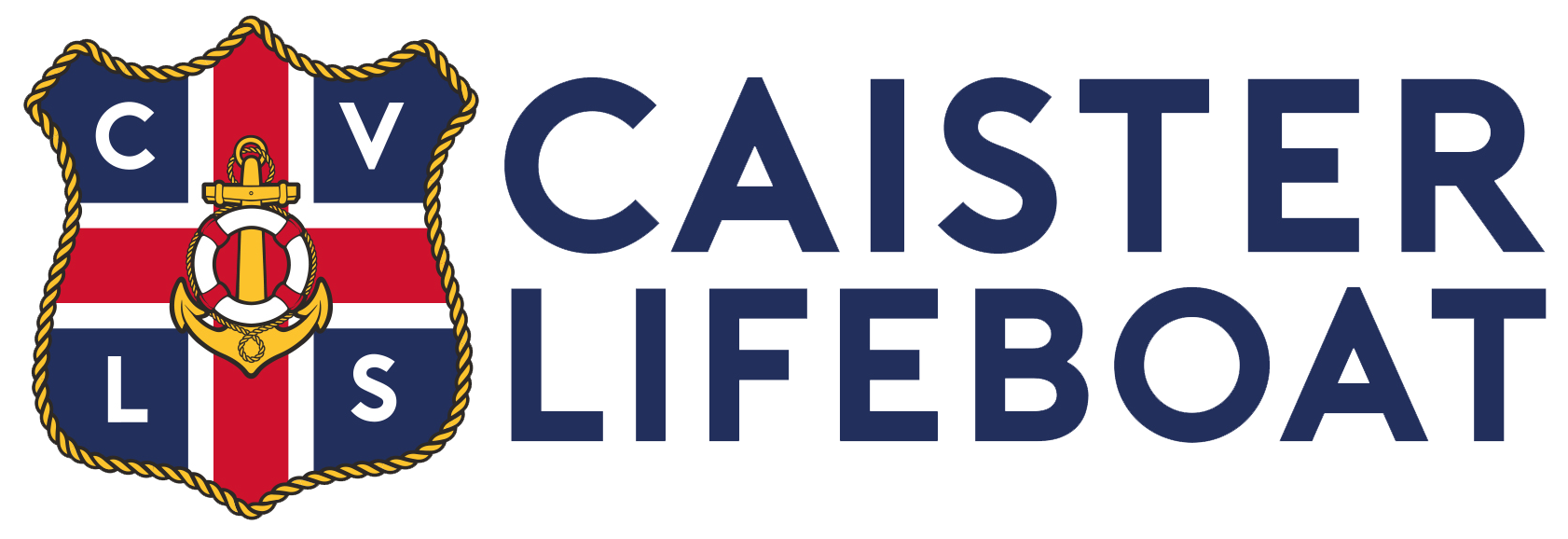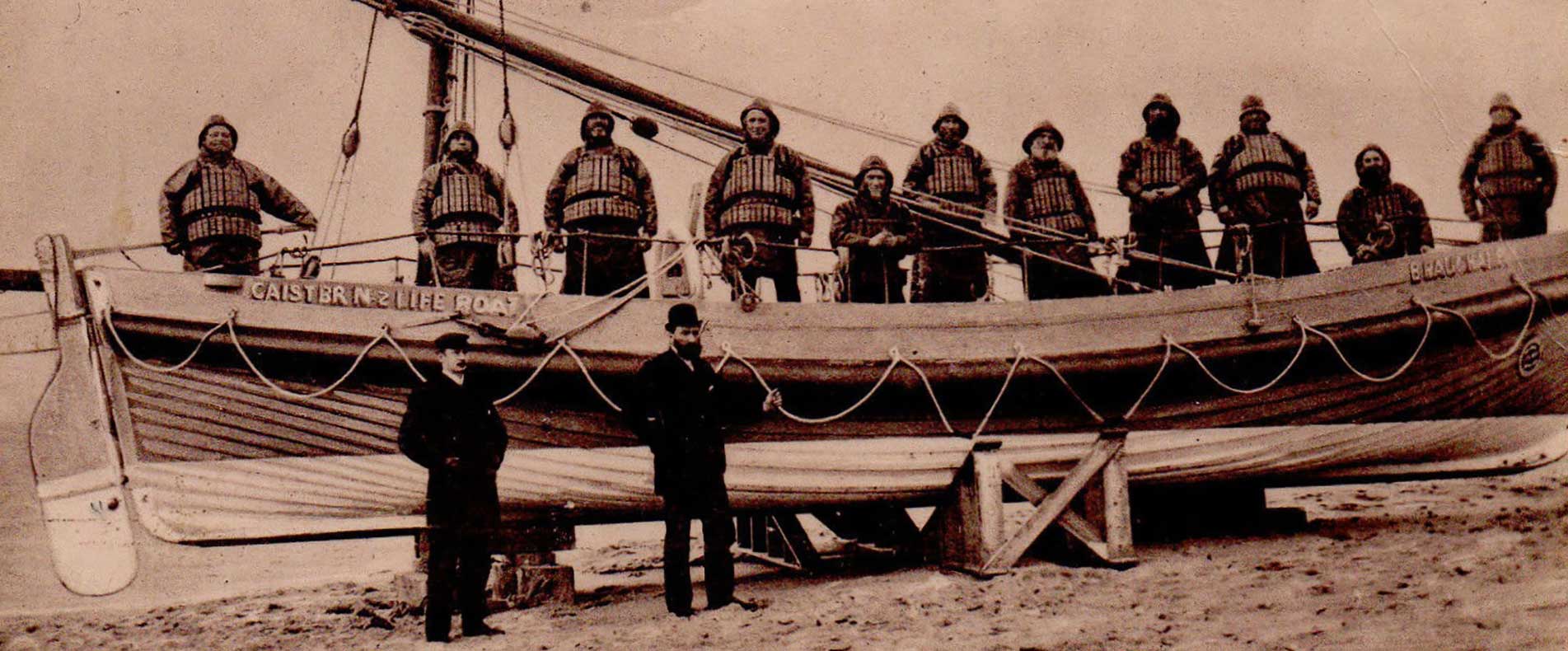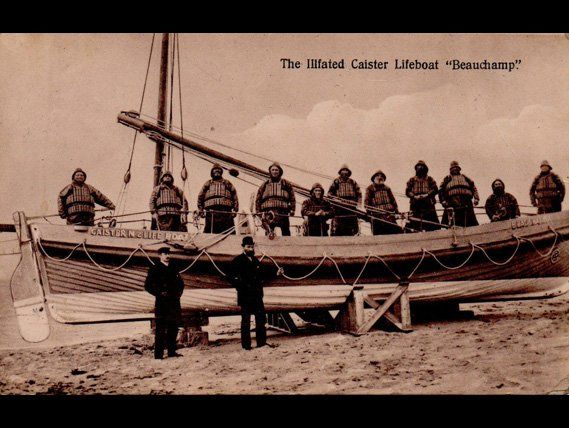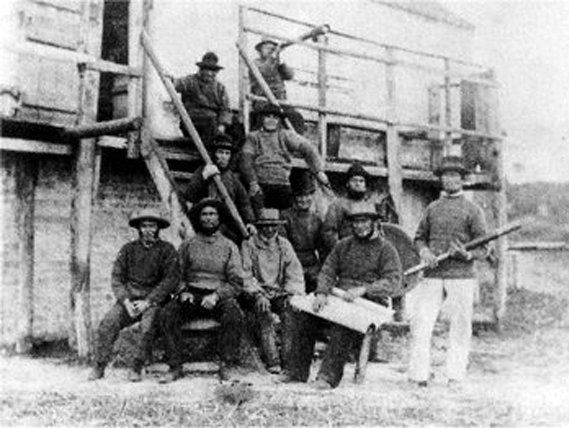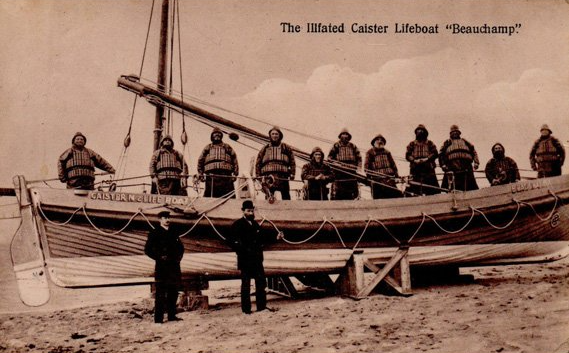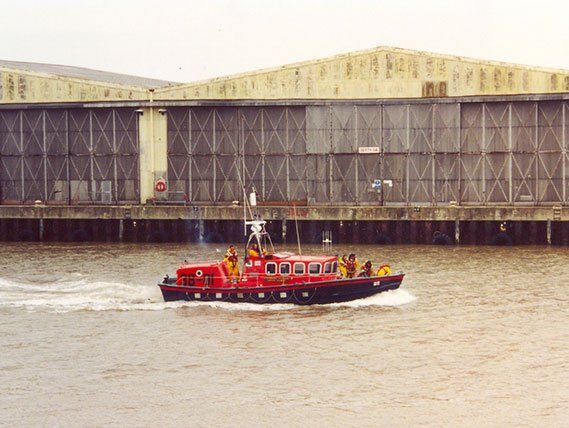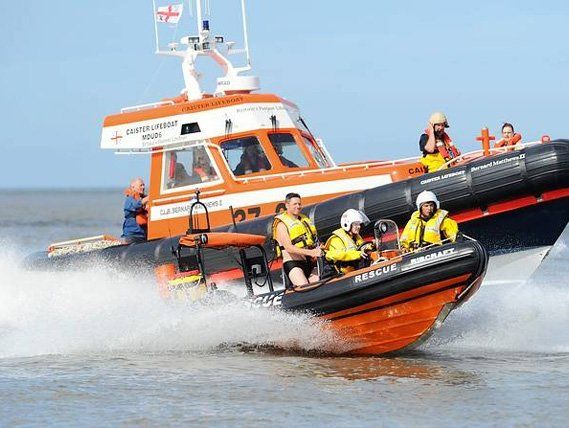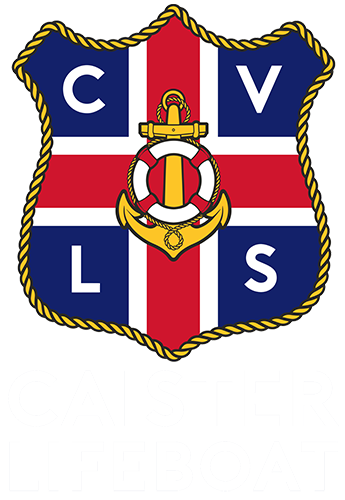SAVING LIVES SINCE 1791
Caister Lifeboat is an independent charity and was Britain’s first independent lifeboat service. It’s role is, and always has been, to save lives at sea and along the coastline of Norfolk and Suffolk.
The Caister Lifeboat charity is made up of a board of eight trustee directors, an operational crew and a team of volunteers who help run our office function, on-site shop, cafe and museum. None of our team is paid, so every penny of donations can be used to support our lifesaving work.
The volunteers and directors are responsible for the day-to-day and long-term planning of Caister Lifeboat. That means ensuring the boats and equipment is correctly maintained, the crew are trained and that the bills get paid. The board of directors are also responsible for fund raising and income, which ranges from a series of events throughout the year, as well as promoting donations and legacies.
The board of directors meets monthly, with another monthly meeting for our 38 members, which is made up of current and past crew. Through the discussions at these meetings, the charity’s policies, aims and ambitions are set out, as well as decisions on investment in lifesaving equipment, training and fund raising.
The charity has been supported and visited by HRH Duke of Edinburgh, HRH Duke and Duchess of Cornwall, the Princess Royal and Princess Alexandra. In 2012, the year of the diamond jubilee of HM Queen Elizabeth II, Caister Lifeboat was invited to take part in the Pageant on the Thames, where the charity was presented with the Queen’s Award for Voluntary Service - the equivalent of an MBE.
Explore the Caister Lifeboat Disaster 1901 at Wikitree.com
Caister Lifeboat cannot be held responsible for content on websites hosted by third parties.
A brief history of Caister Lifeboats
1791
The first record of the Caister Beach Company in 1791 shows that they used boats named 'Assistance' and 'Prince Blucher' for salvage. The array of treacherous sand banks provided a good living for the crews of the gigs and yawls which were the principle rescue vessels of the day.
In 1846 the Norfolk & Suffolk Shipwreck Mariners Association provided a new lifeboat, built at the Yarmouth yard of Branford, a boat of the Norfolk and Suffolk design. All along the East Anglian coastline similar arrangements were being made to provide lifeboats. A lookout was also erected on the beach from where the beach-men kept a constant watch in bad weather.
1901
The BEAUCHAMP had been in service for nine years when on a dark November night in 1901, disaster struck the Caister beach-men. The Lifeboat had been launched but about an hour later was found capsized on the beach and only three of the crew of twelve were saved.
In the wake of this disaster the a veteran lifeboat man, James Haylett, was awarded the RNLI gold medal for his actions in rescuing the three crew and at the inquest into the accident he made a statement that has resulted in the now famous phrase "Caister men never turn back".
1969
In 1969 after 124 years of a lifeboat station at Caister the RNLI decided to close the station. There was public outcry as Caister held the record for the most lives saved by any lifeboat station in the British Isles. The crew, led by the veteran mechanic Jack Skipper Woodhouse decided to have an independent station which immediately took over on the day the RNLI withdrew and the Caister Volunteer Rescue Service (CVRS) was formed.
In 1973 the CVRS purchased an ex-RNLI boat of Liverpool design and renamed her SHIRLEY JEAN ADYE. Formally launched on August 5th 1973, this vessel carried out several memorable rescues and the crew were awarded vellum certificates in 1986 for the rescue of the crew from an oil rig supply ship aground on Scroby Sands in a force 8 gale.
1986
In 1986 the crew and committee decided the time had arrived when the SHIRLEY JEAN ADYE would have to be replaced because at 8 knots top speed she was too slow. In April 1987 a £400,000 appeal was launched to replace this boat with a modern, faster lifeboat.
Powered by twin Ford Sabre Diesel of 240hp, the new boat was officially launched on June 18th 1991 by HRH Princess Alexandra and now maintains the traditions of the Caister station which go back 200 years, to the first Beach Company of 1791. The new lifeboat was named The BERNARD MATTHEWS, after the Norfolk turkey farmer, who is a great supporter of the station.
Image: Claire Parfrey
2004
The Dutch built Valentijn, which slashed response times by more than half, replaced The Bernard Matthews lifeboat, which had been going to the rescue of seafarers off the coast of Great Yarmouth for 12 years. Bernard Matthews II cost just over £450,000 and uses steerable water jets from twin engines instead of propellers and rudders, so as well as speed it is also far more manoeuvrable. This 10-ton jet-propelled boat that can travel up to speeds of 37 knots.
The new Inshore Life Boat (ILB) Fred Dyble was launched by HRH Princess Anne on the 30th April 2013. A new launching trailer allows the lifeboat engine to run whilst on the carriage which in turn allows the lifeboat to be powered out of the launching carriage reducing launching times.
AND A LONGER VERSION...
The first record of the Caister Beach Company in 1791 shows that they used boats named 'Assistance' and 'Prince Blucher'. The main purpose of the Beach Company was salvage, and the coast around Caister with the array of treacherous sand banks provided a good living for the crews of the gigs and yawls which were the principle rescue vessels of the day. Poor navigation, badly maintained ships and indifferent crews all combined to produce tragic results in bad weather, one example being in November 1807 when a total of 144 bodies were washed ashore following a gale. In 1836 it was reported that 23 vessels had been stranded on the Yarmouth beach following a November storm.
It was not without risk to life and limb as the disasters of 1847 and 1885 and the Newport disaster of 1845 illustrated, 12 men from Caister lost their lives. As well as salvage the Beach Company along with the Rocket Brigade also carried out life saving when a lifeboat was first stationed at Caister in 1845 it was the Beach Company that provided the crew. Ben Hodds became the first Coxswain and the work of life saving began firstly, under the auspices of the Norfolk & Suffolk Shipwreck Mariners Association.
In 1846 the Norfolk & Suffolk Shipwreck Mariners Association replaced the second-hand boat with a new lifeboat, built at the Yarmouth yard of Branford, a boat of the Norfolk and Suffolk design, All along the East Anglian coastline similar arrangements were being made by to provide lifeboats. A lookout was erected on the beach from where the beach-men kept a constant watch in bad weather. The Beach-companies worked to a strict set of rules and regulations' governing the payments and distribution of any salvage money the company received and membership of the company was strictly limited, in the case of Caister to 40 men.
In 1857 the RNLI took over responsibility for all lifeboats and in 1865 a new boat, a gift from the Birmingham Lifeboat Fund, arrived at Caister. This 42 foot boat, powered by 14 oars and sail, was named the JAMES PEARCE BIRMINGHAM No 2.During its 18 years service at Caister this boat was used to save 484 lives. Such was the great need for lifeboats at this period that a second station was opened at Caister in 1867 with a boat named THE BOYS, purchased with donations received from the Routledge's Magazine for Boys. This boat was built at the Yarmouth yard of Beechings, famous for their lifeboat design and construction.
In 1875 this boat was renamed GODSEND and three years later the other Caister boat, the JAMES PEARCE, was renamed COVENT GARDEN. In the days of the pulling and sailing lifeboats the crews could be at sea for many hours, in severe weather from which they had virtually no protection. The only aids towards finding the vessel in trouble were flares, rockets, and the many light ships that marked the sandbanks and navigation channels. Even the task of launching a lifeboat could take many hours, the heavy boat having to be manhandled down the beach and through the breakers.
In 1892 a boat named the BEAUCHUMP replaced the GODSEND. This boat had been in service for nine years when on a dark November night in 1901, disaster struck the Caister beach-men. The Lifeboat had been launched but about an hour later was found capsized on the beach and only three of the crew of twelve were saved. In the wake of this disaster the a veteran lifeboat man, James Haylett, was awarded the RNLI gold medal for his actions in rescuing the three crew and at the inquest into the accident he made a statement that has resulted in the now famous phrase "Caister Men Never Turn Back" - click to listen to the song.
A replacement boat arrived in 1903, called NANCY LUCY. In 1929 the No1 station was closed. The Nancy Lucy was re-placed in the same year with the CHARLES BURTON, which was in service at Caister until 1941. The Charles Burton was the last sailing lifeboat in East Anglia. The first motor powered lifeboat at Caister was the JOSE NEVILLE and the introduction of this boat heralded a new era for the station. For the first time tractor power was used to launch the boat from a special trailer and fewer crewmembers and shore parties were required. This new era also brought the disbandment of the old Beachcompany after almost 150 years.
In 1964 the ROYAL THAMES, a boat of the Oakley design, replaced the Jose Neville. The 1960's saw a reorganisation of RNLI stations around the country and in 1969 it was decided to close the Caister station. At this time the station held the proud record of having saved more lives than any other RNLI station in the British Isles, a total of 1814 persons.
In 1969 after 124 years of a lifeboat station at Caister the RNLI decided to close the station, there was public outcry as Caister held the record for the most lives saved by any lifeboat station in the British Isles. The crew, led by the veteran mechanic Jack Skipper Woodhouse decided to have an independent station which immediately took over on the day the RNLI withdrew. At first a small fibre glass boat was placed on station then an inflatable. The Caister Volunteer Rescue Service was formed to maintain the long tradition of lifesaving at Caister and fund raising began to acquire another full size lifeboat.
In 1973 the CVRS purchased an ex-RNLI boat of Liverpool design and renamed her SHIRLEY JEAN ADYE, formally launched on August 5th 1973, this vessel carried out several memorable rescues and the crew were awarded vellum certificates in 1986 for the rescue of the crew from an oil rig supply ship aground on the Scroby Sand in a force 8 gale.
In 1986 the crew and committee decided the time had arrived when the SHIRLEY JEAN ADYE would have to be replaced because at 8 knots top speed she was slow and speed is of the essence. In April 1987 a £400,000 appeal was launched to replace this boat with a modern, faster lifeboat and a 12 ton, 38 foot, Lochin Marine Extended Brede Class boat was fitted out at the Yarmouth yard of Goodchild Marine. Powered by twin Ford Sabre Diesel of 240hp, the new boat was officially launched on June 18th 1991 by HRH Princess Alexandra and now maintains the traditions of the Caister station which go back 200 years, to the first Beach Company of 1791. Caister is the only independent station in the country to operate with a full size lifeboat. The new lifeboat was named The BERNARD MATTHEWS, after the Norfolk turkey farmer, who is a great supporter of the station.
The BERNARD MATTHEWS has been the busiest lifeboat ever on the station, carrying out many remarkable rescues. The sad epic on the 8th - 9th December 1993 truly demonstrated why Caister has the motto "Caister Men Never Turn Back", but whilst no one was saved the letter from the commander of HMS Nottingham is clear. On the 1st October 1995 the yacht "Sequina" was aground on the Scroby Sands in a force 7 gale. Dick Thurlow and the crew plucked 4 people from the capsized vessel. This was after the previous Sunday the crew had rescued 9 people aboard the Dutch yacht "Madame".
Recently the CVRS changed its title to CVLS - Caister Volunteer Lifeboat Service a more appropriate name for the organisation. Once again time has caught up with the lifeboat, The BERNARD MATTHEWS, though still a superb sea boat ideal for the conditions offshore Caister, now design & technology has advanced apace since the mid 80s when the boat was designed. Today water jets have replaced propellers. Therefore the officers of the Caister Lifeboat have been for the last 18 months evaluating a replacement for the present vessel, and have concluded following exhaustive tests that the Dutch KNRM have the lifeboat for the job, perfectly suiting the needs of the station in future.
Our Partners & Friends
Click on a link to dicover more:
Habbeké Shipyard
KNRM Katwijk (our brothers across the North Sea)
Lifeboats 24-7
Independent Lifeboats Forum
Bernard Matthews
Jim Davidson
Jim and Crew Royal Variety Performance
Seafarer Support
Brand Skillings

